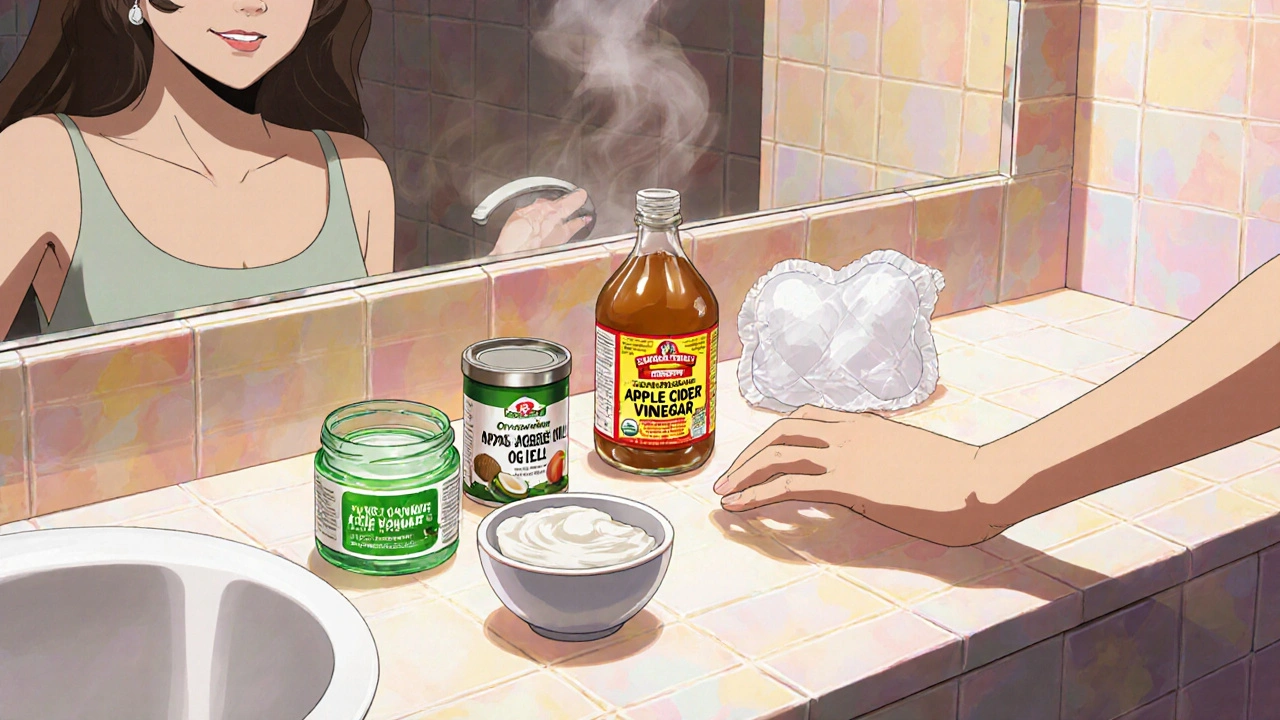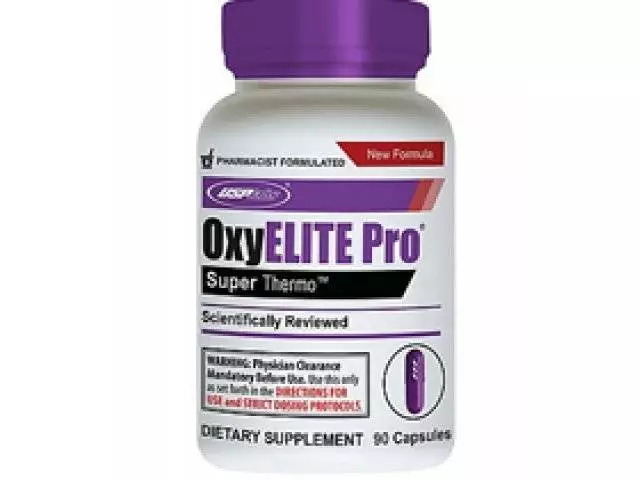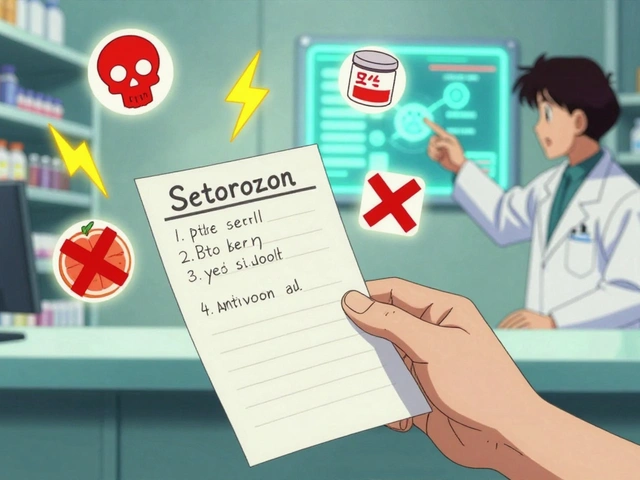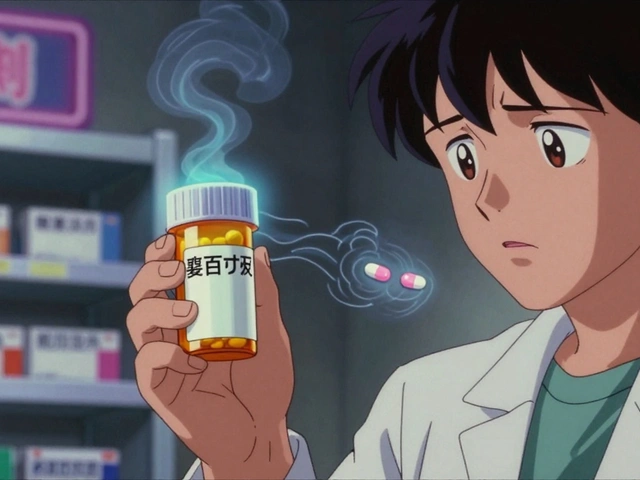Vaginal Burning Symptom Checker
This tool helps identify potential causes of vaginal burning based on your symptoms. Remember, this is not a substitute for professional medical advice. If symptoms persist or worsen, consult a healthcare provider.
Step 1: Describe your symptoms
Key Takeaways
- Identify the underlying cause - infection, hormonal change, or irritation - before treating.
- Simple lifestyle tweaks (cotton underwear, proper hygiene) often stop the burn before it starts.
- Home remedies such as Aloe Vera Gel or Coconut Oil provide fast soothing without prescription.
- When symptoms persist beyond a week or are accompanied by fever, see a clinician promptly.
- Prevention is a daily habit: maintain a balanced pH, stay hydrated, and use probiotic support.
What Exactly Is Vaginal Burning?
Vaginal Burning describes a sharp, stinging sensation inside or around the vaginal opening. It can feel like a mild itch that suddenly flares into a painful heat. The discomfort may worsen after urination, intercourse, or even while sitting for long periods. Though the symptom itself is not a disease, it signals that something inside the lower genital tract is out of balance.
Common Triggers Behind the Burn
Knowing the root cause helps you pick the right remedy. Here are the most frequent culprits:
- Yeast Infection - An overgrowth of Candida creates itching, thick discharge, and a burning feeling.
- Bacterial Vaginosis - Imbalance of normal flora leads to fishy odor, thin gray discharge, and irritation.
- Vaginal Atrophy - Post‑menopausal estrogen loss thins vaginal walls, making them more sensitive to friction and dryness.
- Contact dermatitis - Soaps, douches, scented tampons, or latex condoms can irritate the delicate tissue.
- Urinary tract infection (UTI) - Though primarily a bladder issue, the burning can radiate to the vaginal area.
When to Call a Healthcare Professional
Most mild burns improve with home care, but certain red flags demand medical attention:
- Symptoms persist longer than 7‑10 days despite self‑treatment.
- Fever, chills, or abdominal pain accompany the burn.
- Unusual color or odor in discharge (green, yellow, or foul).
- Repeated episodes (three or more in a year) indicating a chronic condition.
In these cases, a clinician can run a vaginal swab, check pH, and prescribe antifungals, antibiotics, or hormonal therapy as needed.

Everyday Lifestyle Tweaks That Can Calm the Fire
Before reaching for creams, adjust habits that often cause or worsen the sensation.
- Choose breathable fabrics. Swap synthetic panties for 100% cotton. Tight leggings trap moisture, creating a perfect growth medium for microbes.
- Stay hydrated. Adequate water intake keeps vaginal secretions thin and helps flush irritants.
- Mind your cleansers. Use unscented, pH‑balanced (around 4.5) intimate washes. Avoid douching - it disrupts the natural flora.
- Dry gently. After showering or swimming, pat the area dry rather than rubbing. Moisture left on the skin fuels irritation.
- Watch your lubricants. Opt for water‑based or silicone‑based products without glycerin or parabens, especially if you’re prone to yeast overgrowth.
Home Remedies That Provide Quick Relief
The following options are safe for most women and can be mixed or used alone.
| Remedy | Key Benefit | How to Apply | Notes |
|---|---|---|---|
| Aloe Vera Gel | Soothes inflammation, hydrates skin | Apply a thin layer 2‑3 times daily; use pure gel without added fragrance. | Test on inner forearm first to rule out allergy. |
| Coconut Oil | Antifungal, moisturizing | Warm gently, then massage into the outer labia after shower. | Use organic, unrefined oil; avoid if you’re allergic to nuts. |
| Yogurt (plain, unsweetened) | Replenishes Lactobacillus, restores pH | Insert a small amount using a clean syringe; leave for 15 minutes, then rinse. | Make sure it contains live cultures; discard if expired. |
| Apple Cider Vinegar Bath | Acidic environment discourages bacterial overgrowth | Add 1‑2 cups to warm bath; soak 15 minutes, then rinse. | Do not use if you have open sores; dilute well to avoid sting. |
| Cold Compress | Reduces immediate heat sensation | Wrap ice cubes in a clean cloth; apply for 5‑10 minutes. | Never place ice directly on skin. |
These remedies are inexpensive and can be kept in a bathroom cabinet. Most users notice relief within hours to a day.
Over‑the‑Counter (OTC) Options for Faster Action
If home care isn’t enough, the pharmacy aisle offers targeted treatments.
- Antifungal creams - Clotrimazole 1% or Miconazole 2% applied twice daily for 7 days tackles most yeast infections.
- pH‑balancing gels - Products containing lactic acid help restore the acidic environment within 24‑48 hours.
- Topical anesthetic sprays - Lidocaine 2% can numb the area for temporary relief during flare‑ups.
Even though these are OTC, read the label for contraindications (e.g., pregnancy) and stop use if irritation worsens.

Prescription Treatments When OTC Falls Short
Persistent or severe burns may need medical prescription:
- Oral fluconazole - A single 150 mg dose treats systemic yeast infections that affect the vagina.
- Antibiotics - Metronidazole or clindamycin for confirmed bacterial vaginosis.
- Local estrogen therapy - Vaginal creams, rings, or tablets help post‑menopausal women with atrophic dryness.
Only a doctor can decide the best regimen based on lab results.
Long‑Term Prevention Strategies
Preventing future burning episodes is often easier than treating them.
- Probiotic supplementation. Look for Probiotic Supplement containing Lactobacillus rhamnosus GR-1 and L. reuteri RC-14. One capsule daily supports healthy vaginal flora.
- Balanced diet. Reduce sugar and refined carbs - Candida thrives on glucose.
- Regular medical check‑ups. Annual gynecological exams catch early imbalances.
- Avoid irritants. Switch to fragrance‑free detergents for underwear and bed linen.
- Safe sex practices. Use water‑based condoms and consider a probiotic post‑coitus if you’re prone to yeast.
Quick Reference Cheat‑Sheet
- First‑line relief: Clean with pH‑balanced wash, apply Aloe Vera Gel or Coconut Oil, wear cotton.
- If no improvement in 3‑5 days: Try OTC antifungal or pH gel.
- Beyond 7 days or severe symptoms: See a clinician for lab testing.
- Weekly prevention: Probiotic supplement + adequate hydration.
Frequently Asked Questions
Can I use regular soap to wash the vagina?
No. Regular soap is usually alkaline and can disrupt the natural pH, increasing irritation. Stick to mild, unscented, pH‑balanced cleansers designed for intimate use.
Is a yeast infection the only cause of vaginal burning?
No. Bacterial vaginosis, vaginal atrophy, contact dermatitis, and UTIs can all produce a burning sensation. Identifying the exact cause is key to effective treatment.
Can I use a tampon while experiencing burning?
It’s best to avoid tampons until the irritation subsides. Tampons can trap moisture and worsen the problem. Opt for panty liners made of breathable cotton instead.
Are probiotic foods like yogurt as effective as supplements?
Both help, but supplements provide a higher, more consistent dose of specific Lactobacillus strains proven to colonize the vagina. Yogurt can be a supportive addition, especially if it contains live cultures.
When should I consider hormonal therapy for burning?
If you’re post‑menopausal and notice persistent dryness, thinning, or burning despite other measures, a low‑dose estrogen cream or vaginal ring can restore tissue elasticity and moisture. Discuss risks and benefits with your doctor.









12 Comments
Tammy Sinz
Oct 22 2025From a pathophysiological perspective, vaginal burning often stems from dysbiosis-induced irritation of the mucosal epithelium. The interplay between Candida overgrowth and a compromised acidic pH creates a feedback loop that perpetuates nociceptive signaling. Mitigating this requires both eradication of the offending microorganism and restoration of the native Lactobacillus dominance. Empirical application of topical Aloe vera or coconut oil can provide immediate barrier protection while systemic antifungals address the underlying colonization. Clinicians should also evaluate hormonal status, as estrogen deficiency exacerbates epithelial atrophy and amplifies thermal discomfort.
Christa Wilson
Oct 22 2025Love the practical tips, especially the aloe hack! 😊
John Connolly
Oct 22 2025The article does a solid job of breaking down the etiology of vaginal burning into manageable categories.
First, recognize that microbial imbalance-whether yeast or bacterial-sets the stage for inflammation.
Second, mechanical irritation from synthetic fabrics or scented products adds a chemical stressor that compounds the problem.
Third, hormonal fluctuations, particularly low estrogen in post‑menopausal women, thin the mucosal barrier and lower pain thresholds.
For each of these root causes, there is a tiered therapeutic approach that starts with lifestyle modifications before escalating to pharmacologic interventions.
Breathable cotton underwear is a low‑cost, high‑impact change because it reduces moisture retention and limits microbial proliferation.
Hydration supports the natural secretory function of the vaginal epithelium, keeping the pH in the optimal acidic range of 3.8 to 4.5.
Unscented, pH‑balanced cleansers prevent alkaline disruption that would otherwise favor pathogenic overgrowth.
When it comes to topical home remedies, pure Aloe vera gel supplies glycoproteins that soothe inflammation and promote epithelial repair.
Coconut oil offers a dual benefit of antifungal fatty acids and occlusive moisturization, which can be especially helpful for atrophic dryness.
If symptoms persist beyond three days, an over‑the‑counter antifungal such as clotrimazole 1 % applied twice daily for seven days typically resolves Candida‑related burning.
For bacterial vaginosis, a short course of metronidazole gel or oral tablets restores the lactobacilli‑dominant flora and eliminates the characteristic fishy odor.
In cases where hormonal deficiency is evident, low‑dose vaginal estrogen-whether in cream, tablet, or ring form-re‑epithelializes the tissue and alleviates thermal sensitivity.
Probiotic supplementation containing Lactobacillus rhamnosus GR‑1 and L. reuteri RC‑14 can augment the recolonization process, especially after antibiotic exposure.
It is crucial to monitor for red‑flag symptoms such as fever, foul discharge, or pain unrelieved after a week of diligent self‑care, as these warrant prompt medical evaluation.
By integrating these evidence‑based steps into a daily routine, most women can prevent recurrent burning episodes and maintain vaginal health with confidence.
Sameer Khan
Oct 23 2025Building on the systematic framework you outlined, it is worth emphasizing the microbiome’s resilience when environmental stressors are minimized. A disciplined regimen of cotton garments and pH‑neutral cleansers not only curtails opportunistic overgrowth but also reinforces the mucosal immune tolerance. Moreover, the temporal sequencing of interventions-starting with barrier restoration before antimicrobial deployment-optimizes therapeutic efficacy and reduces the risk of resistance. Integrating dietary modulation, such as limiting refined sugars that fuel Candida, synergizes with probiotic supplementation to sustain a favorable lactobacilli milieu. Ultimately, patient education anchored in these principles translates mechanistic insight into tangible quality‑of‑life improvements.
Don Goodman-Wilson
Oct 23 2025Oh great, another blog telling us to “just use coconut oil” like it’s a magic wand. 🙄 If only all medical dilemmas could be solved with pantry staples, I’d never need a doctor again.
Diane Thurman
Oct 23 2025Well, idk if allly that works for evryone-some ppl r allergic to nuts, so be careful not 2 burn down the house with all that oil.
Sarah Riley
Oct 23 2025Empirical data suggests that topical lanolin analogs lack sufficient antifungal activity, rendering them suboptimal for Candida‑mediated burning.
Sajeev Menon
Oct 23 2025While the statement holds some validity, it's also important to consider patient preference and accessibility-some individuals may find coconut oil more affordable and thus more adherent, even if the antifungal potency is lower.
Emma Parker
Oct 23 2025hey guys, just wanted to say i tried that coconut oil trick after a bad yeast episode and it actually helped my sis feel better super quick lol thanks for the tip! :)
Joe Waldron
Oct 23 2025In reviewing the literature, one observes that the prevalence of vaginal burning in reproductive‑aged women is approximately 12 % (Smith et al., 2022); this underscores the necessity of public health initiatives, education campaigns, and accessible OTC options. Moreover, the correlation between high‑glycemic diets and Candida overgrowth is well‑documented; therefore, dietary counseling should be integrated into routine gynecologic visits. Finally, clinicians must remain vigilant for atypical presentations that may masquerade as simple irritation but actually signify underlying systemic pathology.
Wade Grindle
Oct 23 2025That summary captures the key epidemiological and nutritional factors nicely; adding a note about the role of vaginal pH monitoring could further enhance clinical assessment.
Jai Reed
Oct 23 2025Stop ignoring the fact that many women still rely on outdated home remedies because affordable medical care is out of reach; the community must demand broader insurance coverage for proven OTC treatments.